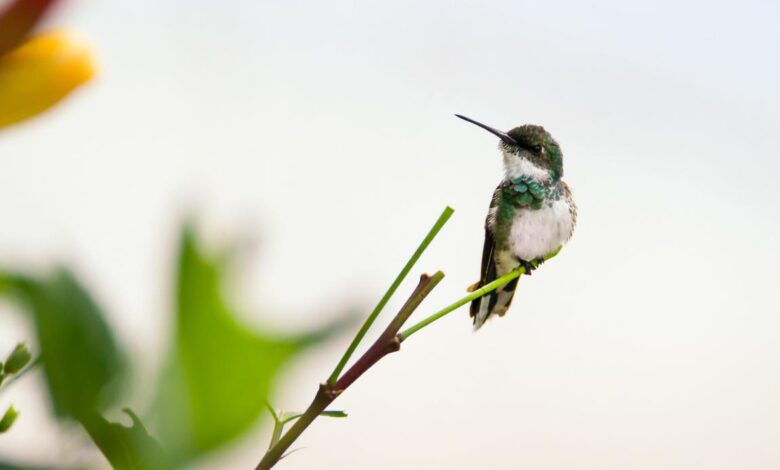
best Hummingbird Feeders
Hummingbirds are so tiny, and so cool to watch! If you’ve had the pleasure of seeing these little birds frequently in your yard,
it’s because you have what attracts them and meets their dietary needs. They visit your yard because you have the best food in the neighborhood, they like your flower gardens and/or your hummingbird feeder.

If you’re having a steady number of hummingbirds and you seem to be refilling the feeder often, then you definitely have system.
But if you’re like the rest of us, you had to go online and learn some hummingbird facts first. Did you know that hummingbirds get the energy they
need to maintain their astonishing metabolism primarily from flower nectar and the sugar water they find at hummingbird feeders?
Hummingbirds can be enticed to visit feeders filled with sugar water, especially when nectar bearing plants are nearby.
It’s not necessary to purchase a commercially made “hummingbird food”. They can easily get the amount of sugar they need from a simple mixture of one part ordinary white cane sugar to four parts water,
approximating the average sucrose content of many flowers favored by North American hummingbirds. This mixture is sweet enough without attracting too many other sweet-seeking insects, like ants.
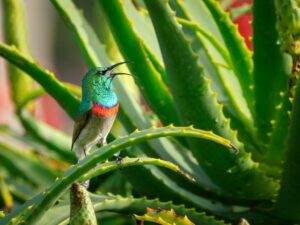
Change syrup frequently and wash feeder thoroughly, especially in warmer weather when nectar spoils rapidly. Hummingbirds will choose starvation over consuming spoiled feeder syrup.
Now that you know what to feed them, you need to know what type of hummingbird feeders are going to attract the most birds.
There are lots of styles of feeders available in garden centers and by mail order, mostly made of plastic, glass, or ceramic materials.
Any feeder can attract hummingbirds, as long as it holds fresh syrup, but a basin style feeder is much better than the inverted bottle-types.
Feeders with perches are also good because perching saves a lot of calories, and gives hummingbirds a place to rest while they’re feeding.
Unique hummingbird feeders and great selections of patio and garden accessories and more can be found online at www.birdsforever.com and
www.birdwatchers.com, featuring lots of hummingbird feeder information including the most popular, highest quality, and unique hummingbird feeders and accessories.
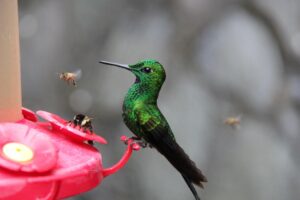
For more interesting hummingbird feeder facts, visit www.faq.gardenweb.com, to find out specifically what to look for when purchasing a feeder, including features like ant moats, bee guards, built-in perches, and ease of cleaning.
As you can see, purchasing the right feeder in combination with the right nectar can make quite a difference in the number of hummingbirds that visit your yard.
Building Your Own Humming Bird Feeder
We all know that taking a beautiful photo of humming birds is hard to obtain, even when they are inside cages.
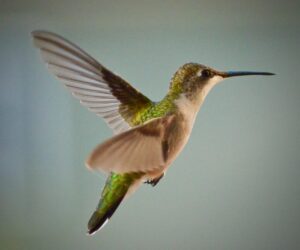
The only thing that you could do is buy a hummingbird feeder to bring these birds into photographic distance. But these ready-made hummingbird feeders are somewhat expensive.
Worry no more, because you can make your very own hummingbird feeder for free. All you need to do is recycle used or old prescription vials for making nectar dispensers. Hummingbirds are known to feed on nectars.
The materials needed to make your own hummingbird feeder are clear prescription vials with a fitted cap, a few feet of thin wire or heavy thread and transparent tape or scotch tape. You may also need a sharp pointed metal object like an ice pick.
To start with this project, heat up the ice pick or whatever sharp pointed metal you are using and make a pair of holes on each side of the prescription vial, near the open end where the cap is placed.
You have to make sure that they are close but not too close that the holes are covered with the bottom of the cap when it is placed on. The size of the holes should be small enough to keep the liquid inside the container.
Next, round up the thin wire or thread. Secure it by wrapping with the scotch tape or transparent tape on each end of the thread or thin wire to the prescription vial. If you want extra holding capacity, wrap a second piece of transparent tape around the prescription vial.
Basically, that’s all you have to do in making hummingbird feeders. It depends on you how many hummingbird feeders you want to make, but if you want to enjoy watching more than just one hummingbird, you can make a number of these feeders and tie them into a mobile and place them in your backyard.
To fill up your hummingbird feeder, remove the cap holding the prescription vial on and fill it up with nectar and replace the cap. Closed tightly, turn the prescription vial upside down as quickly as you can.
The feeder’s hole should be at the bottom, a small amount of nectar will leak out the feeder’s holes, but as soon as the vacuum inside the prescription vial is created, the leakage will stop.
Now we come to making the nectar for the hummingbirds. Basically there are two choices of nectar. First is the nectar mix that is commercially available in a granulated form.
Or second, you can make your own nectar from a sugar solution. For the purpose of information, honey is not recommended. Research proves that too much honey is harmful to hummingbirds, since it weakens them and may cause death to these birds.
Just where to hang the feeders? In general, it is good to hang these feeders in any part of the garden where there is no direct exposure to sunlight and where the wind will not be able to shake the feeder.
Direct sunlight speeds up fermentation of the nectar inside the feeder. It is recommended to hang the hummingbird feeders near the flowers in the garden to further attract these birds.
Now, you can enjoy watching hummingbirds hovering and perching on your own feeder.
Hummingbirds
Many individuals are fascinated by hummingbirds. So much so, that they will do anything in their power to attract these petite creatures to their yards.
So what is the best way to attract these wee feathered friends?
Here are some tips to help make your home a hummingbird hot spot:
What Do Hummingbirds Eat?
Hummingbirds usually feed off flower nectar and sugar water that is left out for them in birdfeeders. They also feed off of small insects like ants, slugs and spiders.
If you really want to attract hummingbirds to your yard, make sure your bird feeder is always filled with nectar and sugar water.
What Should My Hummingbird Feeder or House Look Like?
It is a well-known fact that hummingbirds are attracted to the color red. That being said, if the feeder you already have isn’t red get out your paint brush or stick a large red bow on it to get their attention.
The best hummingbird feeders have perches for the birds to stand on while they feed. The holes in hummingbird feeders are just big enough for the little guys to fit their heads in, but they’re too small for squirrels and other larger animals so they can’t steal the food.
Refrain from painting your hummingbird feeder or house yellow because bees and wasps are attracted to these colors and also enjoy the taste of sweet nectar. You’ll want to keep insects as far away from your hummingbird feeders and houses as possible.
What Materials Should Hummingbird Houses or Feeders be made of?
Hummingbird feeders and houses are usually made of acrylic or glass. They are also available in wood and plastic; however these do not work as effectively and may cause harm to the birds (slivers and cuts).
Hummingbird houses and feeders come in a variety of sizes and shapes and usually contain numerous feeding areas throughout the feeder.
Where Should I my Hummingbird Feeder?
Ideally, a hummingbird feeder should be hung near a garden with bright flowers and plants. A flowery location is most likely to attract the attention of hummingbirds.
For your viewing pleasure, you may want to hang your feeder in a place that can be easily seen from your home. For example a hummingbird feeder hung in front of a window can be admired all day.
How Much Do Hummingbird Feeders Cost?
The styles and designs differ so much that it’s difficult to determine a specific price. Hummingbird feeders and houses can cost anywhere from $10 to $50 – depending on the style, design and features.
How You Can Control Hummingbird Feeder Pests Such as Ants, Bees and Wasps
The same sugar solution that attracts Hummingbirds to your feeder, will also be attractive to ants, bees and wasps.
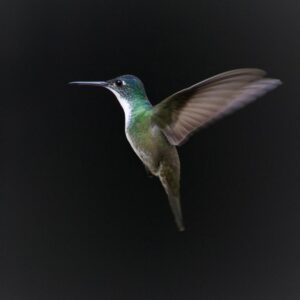
Not only will they drink, they will also contaminate the nectar and sometimes even keep the Hummingbirds from using the feeder. Ants getting inside the feeder will drown and contaminate the nectar as their bodies decompose.
As for bees and wasps, I have seen bees and wasps at my feeder so thick that the Hummingbirds couldn’t feed at all. Thumping them with a rolled up newspaper seemed to help a little, but every time I thumped one, it wasn’t long before it was replaced by another.
Besides being a little too risky, after a while it begins to take a toll on your feeder! So, let’s examine some alternative possibilities to controlling pests at your Hummingbird feeder.
Keep the ants from finding your Hummingbird feeder. Using a drip less feeder is one way to help keep the ants from locating your Hummingbird feeder.
Bottle-type feeders have a tendency to drip. When the air that’s trapped above the nectar heats up, it expands and forces the nectar out through the feed ports. Basin or saucer type feeders are designed so that they are less likely to drip.
Keep the ants away from the Hummingbird nectar. Okay, the ants have found your feeder, go to plan B. The best way to keep ants away from the nectar is to use some sort of “ant guard”.
An ant guard is a barrier that’s placed between the ants and the Hummingbird nectar. These aunt guards are built into some feeders in the form of an ant moat that can be filled with water to keep the ants away from the nectar.
But they can also be purchase separately and added to a feeder. They usually consist of a plastic cup about 3 inches in diameter that fits tightly around the hanger wire above the feeder. Once the cup is filled with water the ants can’t get to the nectar.
You can also make your own ant moat using the plastic cap from a spray can. Punch or drill a hole in the cap to run the feeder hanger wire through, then use hot glue or silicone sealant to seal the hole and make the lid water proof so you can fill it with water.
How to control bees and wasps. Buy a feeder with bee guards. Some Hummingbird feeders come equipped with plastic mesh bee guards.
Unfortunately, a lot of these Hummingbird feeders will also be prone to dripping which will undermine the effectiveness of the bee guards.
Try moving the feeder. Sometimes just moving the Hummingbird feeder a few feet will trick the insects into thinking that it’s gone and they won’t find it.
If your insects happen to be too smart to fall for this one, try taking the feeder down for a day or two until they quit looking for it.
The Hummingbirds won’t give up as quick as the insects, so once you hang it back up the Hummingbirds will find it again.
Give the insects their own feeder. Personally, I would rather go back to thumping them with a rolled up newspaper before I conceded and tried this trick, but it’s a technique used effectively by lots of people, so I thought it appropriate to mention here.
You will need two Hummingbird feeders, one for the bees and wasps and one for the Hummingbirds. Bees and wasps are more attracted to higher concentrations of sugar, so in their feeder use a nectar ratio of 1 part sugar to 3 parts water.
In the Hummingbirds feeder, instead of using the standard 1 to 4 ratio, use a ratio of 1 part sugar to 5 parts water. This ratio although not as sweet as the 1 to 4, will still be good enough for the Hummingbirds , but not nearly as attractive to the bees and wasps as the feeder with the 1 to 3 ratio.
Give the bees and wasps a few hours to attach themselves to their feeder then move it away from the Hummingbird feeder and hope they follow.
Buy a basin or saucer-type Hummingbird feeder. These type feeders are pretty much drip proof, so they’re not as likely to attract insects in the first place.
Also, the nectar level will be lower and out of reach to the insects, but not out of reach to the Hummingbirds with their long tongues.
My favorite basin-type feeder is the HummZinger, which can be purchased at most places that carry a good selection of Hummingbird feeders. It’s kind of expensive, but has several features that might warrant a high price.
The HummZinger has patented Nectar guard tips which are flexible membranes attached to the feed ports that prohibit entry from flying insects, but allow Hummingbirds to feed as usual.
The HummZinger also has a built in ant moat that will stop crawling insects from getting to the nectar. This Hummingbird feeder can solve your ant, bee and wasp problems all at the same time.
Creating a Butterfly and Hummingbird Garden
With just a little bit of planning, you can have beautiful butterflies and hummingbirds flocking to your garden.

That’s good news for gardeners because not only are these winged creatures fun to watch, they’re essential pollinators.
The key is to know what hummingbirds and butterflies look for, which is flowers with nectar. So when you select nectar-rich plants for your garden, look for varieties that are both prolific bloomers and have a long bloom time. Prune your plants to prevent excessive woody growth and encourage the growth of new flowers.
Try these tips from Monrovia, one of the leading growers of plants:-
• Hummingbirds are attracted to bright orange, red and hot pink blossoms. Their long, narrow beaks can reach the nectar of long,
tubular flowers such as the Balboa Sunset Trumpet Vine with its large scarlet blossoms, and the Goldflame Honeysuckle, which has vibrant yellow and red flowers.
Other good choices are the Super Red Flowering Maple and the Navajo series of Salvia, available in many colors, including bright red, rose and salmon red.
• Not all hummingbirds feed at the same height, so plant an array of shrub sizes and climbing vines for food sources.
• Butterflies are attracted to yellow, orange and red. They too are seeking nectar, but their mouths, or proboscises, are much smaller, so they prefer flatter flowers they can perch on while they feed.
The no-fail plant for butterflies is the Butterfly Bush, or Buddleja. However, since they can get too large for some gardens, consider the Petite series of Dwarf Butterfly Bushes.
Petite Indigo has a profusion of lilac-blue flowers; Petite Plum sports reddish-purple blooms and the Petite Snow has pure white blossoms.
• Lilacs are favorites of butterflies, but don’t typically flower well in climates with warmer winters. The Blue Skies Lilac produces huge clusters of light lavender-blue flowers that don’t require winter chilling.
Butterflies love Coneflowers, such as the bright pink Pixie Meadowbrite. Asters are great because they bloom well into fall. The new Farmington Aster has a profusion of lilac bloom clusters that butterflies flock to.
• Supply a source of water. Hummingbirds enjoy flying through a fine mist, which cools them off. Butterflies like drinking from shallow puddles. Position some large flat rocks in a sunny spot, on which butterflies can sun themselves to warm their wings.
best hummingbird feeders amazon,unique hummingbird feeders,walmart hummingbird feeders,glass hummingbird feeders,marys hummingbird feeder reviews,best hummingbird feeder recipe,consumer reports best hummingbird feeder,modern hummingbird feeder,
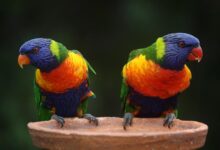
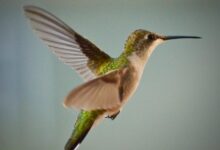
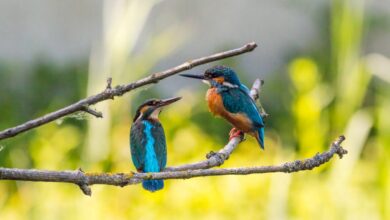

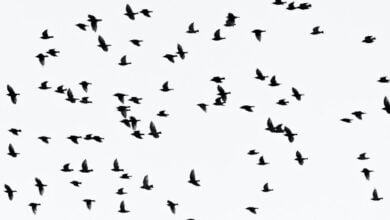
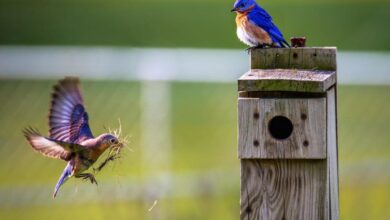
For my thesis, I consulted a lot of information, read your article made me feel a lot, benefited me a lot from it, thank you for your help. Thanks!